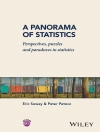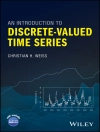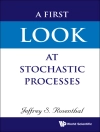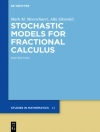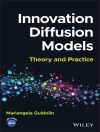DNA evidence is widely used in the modern justice system. Statistical methodology plays a key role in ensuring that this evidence is collected, interpreted, analysed and presented correctly. This book is a guide to assessing DNA evidence and presenting that evidence in a courtroom setting. It offers practical guidance to forensic scientists with little dependence on mathematical ability, and provides the scientist with the understanding they require to apply the methods in their work. Since the publication of the first edition of this book in 2005 there have been many incremental changes, and one dramatic change which is the emergence of low template DNA (LTDNA) profiles. This second edition is edited and expanded to cover the basics of LTDNA technology. The author’s own open-source R code like LTD is described and used for worked examples in the book. Commercial and free software are also covered.
Mục lục
Preface to the 2nd edition xvi
Preface to the 1st edition xvii
1 Introduction 1
1.1 Weight-of-evidence theory 1
1.2 About the book 3
1.3 DNA profiling technology 4
1.4 What you need to know already 5
1.5 Other resources 6
2 Crime on an island 9
2.1 Warm-up examples 10
2.1.1 People v. Collins (California, 1968) 10
2.1.2 Disease testing: Positive Predictive Value (PPV) 10
2.1.3 Coloured taxis 12
2.2 Rare trait identification evidence 14
2.2.1 The /island’ problem 14
2.2.2 A first lesson from the island problem 15
2.3 Making the island problem more realistic 17
2.3.1 The effect of uncertainty about p 17
2.3.2 Uncertainty about N 19
2.3.3 The effect of possible typing errors 19
2.3.4 The effect of searches 20
2.3.5 The effect of other evidence 22
2.3.6 The effects of relatives and population subdivision 23
2.4 Weight-of-evidence exercises 24
3 Assessing evidence using likelihoods 27
3.1 Likelihoods and their ratios 28
3.2 The weight-of-evidence formula 29
3.2.1 Application to the island problem 31
3.3 General application of the formula 32
3.3.1 Several items of evidence 32
3.3.2 The role of the expert witness 34
3.4 Consequences for DNA evidence 35
3.4.1 Many possible culprits 35
3.4.2 Incorporating the non-DNA evidence 35
3.4.3 Relatives 38
3.4.4 Laboratory and handling errors 39
3.4.5 Database searches 40
3.5 Derivation of the weight-of-evidence formula y 42
3.5.1 Bayes Theorem 42
3.5.2 Uncertainty about p and N 43
3.5.3 Grouping the alternative possible culprits 44
3.5.4 Typing errors 45
3.6 Further weight-of-evidence exercises 46
4 Profiling technologies 49
4.1 STR typing 50
4.1.1 Anomalies 53
4.1.2 Contamination 56
4.1.3 Low-template DNA (LTDNA) profiling 56
4.2 mt DNA typing 58
4.3 Y-chromosome markers 59
4.4 X-chromosome markers i 59
4.5 SNP profiles i 60
4.6 Sequencing i 62
4.7 Methylation i 62
4.8 RNA i 63
4.9 Fingerprints i 63
5 Some population genetics for DNA evidence 65
5.1 A brief overview 65
5.1.1 Drift 65
5.1.2 Mutation 68
5.1.3 Migration 69
5.1.4 Selection 70
5.2 FST 71
5.2.1 Population genotype probabilities 73
5.3 A statistical model and sampling formula 74
5.3.1 Diallelic loci 74
5.3.2 Multi-allelic loci 79
5.4 Hardy-Weinberg equilibrium 80
5.4.1 Testing for deviations from HWE i 81
5.4.2 Interpretation of test results 86
5.5 Linkage equilibrium 86
5.6 Coancestry i 88
5.7 Likelihood-based estimation of FST i 90
5.8 Population genetics exercises 92
6 Inferences of identity 95
6.1 Choosing the hypotheses 95
6.1.1 Post-data equivalence of hypotheses 97
6.2 Calculating LRs 99
6.2.1 The match probability 99
6.2.2 Single locus 100
6.2.3 Multiple loci: the /product rule’ 103
6.2.4 Relatives of Q 105
6.2.5 Confidence limits i 107
6.2.6 Other profiled individuals 108
6.3 Application to STR profiles 109
6.3.1 Values for the pj 109
6.3.2 The value of FST 111
6.3.3 Choice of population 112
6.3.4 Errors 113
6.4 Application to haploid profiles 114
6.4.1 mt DNA profiles 114
6.4.2 Y-chromosome markers 116
6.5 Mixtures 117
6.5.1 Visual interpretation of mixed profiles 117
6.5.2 Likelihood ratios under qualitative interpretation 119
6.5.3 Quantitative interpretation of mixtures 124
6.6 Identification exercises 126
7 Inferring relatedness 129
7.1 Paternity 129
7.1.1 Weight of evidence for paternity 129
7.1.2 Prior probabilities 130
7.1.3 Calculating LRs 131
7.1.4 Multiple loci: the effect of linkage 136
7.1.5 Q may be related to c but not the father 138
7.1.6 Incest 139
7.1.7 Mother unavailable 140
7.1.8 Mutation 141
7.2 Other relatedness between two individuals 146
7.2.1 Only the two individuals profiled 146
7.2.2 Profiles of known relatives also available y 147
7.2.3 Software for relatedness analyses 148
7.3 Familial search 150
7.4 Inference of ethnicity y 151
7.5 Inference of phenotype y 153
7.6 Relatedness exercises 153
8 Low template DNA profiles 155
8.1 Background 155
8.2 Stochastic effects in LTDNA profiles 158
8.2.1 Dropout 158
8.2.2 Dropin 158
8.2.3 Peak Imbalance 159
8.2.4 Stutter 159
8.3 Computing likelihoods 160
8.3.1 Single contributor allowing for dropout 160
8.3.2 Profiled contributors not subject to dropout 161
8.3.3 Modelling dropin 162
8.3.4 Multi-dose dropout and degradation 163
8.3.5 Additional contributors subject to dropout 164
8.3.6 Replicates 164
8.3.7 Using peak heights 165
8.4 Quality of results 168
9 Introduction to like LTDi 171
9.1 Installation and example R script 172
9.1.1 Input 172
9.1.2 Allele report 173
9.1.3 Arguments and optimisation 173
9.1.4 Output report 175
9.1.5 Genotype probabilities 177
9.2 Specifics of the package 179
9.2.1 The parameters 179
9.2.2 Key features of like LTD 180
9.2.3 Maximising the penalised likelihood 181
9.2.4 Computing time and memory requirements 182
9.3 Verification 183
10 Other approaches to weight of evidence 187
10.1 Uniqueness 188
10.1.1 Analysis 189
10.1.2 Discussion 190
10.2 Inclusion/Exclusion probabilities 190
10.3 Hypothesis Testing y 193
10.4 Other exercises 194
11 Some issues for the courtroom 197
11.1 The role of the expert witness 197
11.2 Bayesian reasoning in court 198
11.3 Some fallacies 200
11.3.1 The prosecutor’s fallacy 200
11.3.2 The defendant’s fallacy 201
11.3.3 The uniqueness fallacy 201
11.4 Some UK appeal cases 202
11.4.1 Deen (1993) 202
11.4.2 Adams (1996) 202
11.4.3 Doheny/Adams (1996) 204
11.4.4 Watters (2000) 206
11.4.5 T (2010) 207
11.4.6 Dlugosz (2013) 209
11.5 US National Research Council reports 210
11.6 Prosecutor’s fallacy exercises 212
12 Solutions to exercises 213
Giới thiệu về tác giả
David J. Balding, University of Melbourne, Australia; and University College London, UK.
Christopher D. Steele, University College London, UK.







